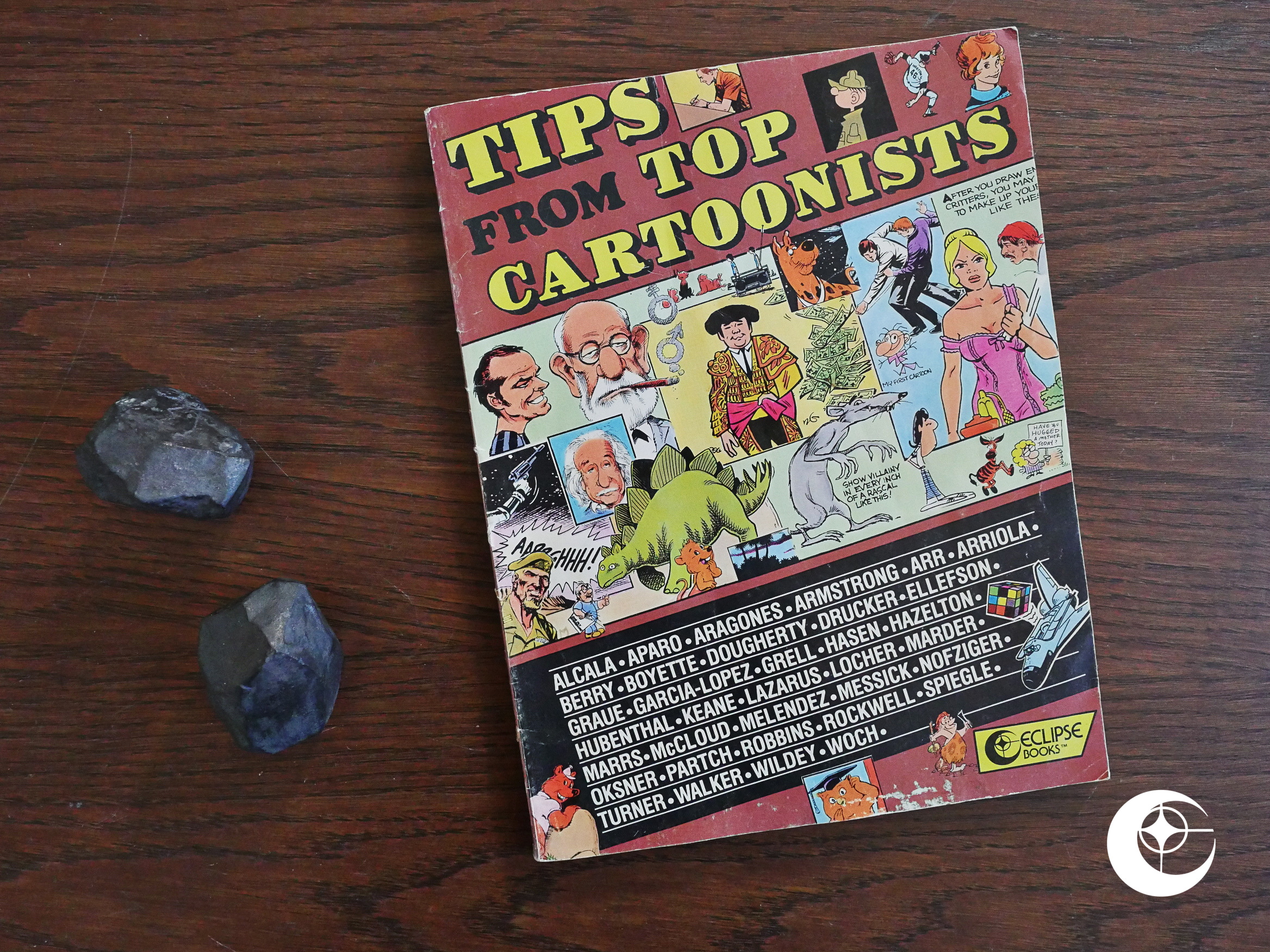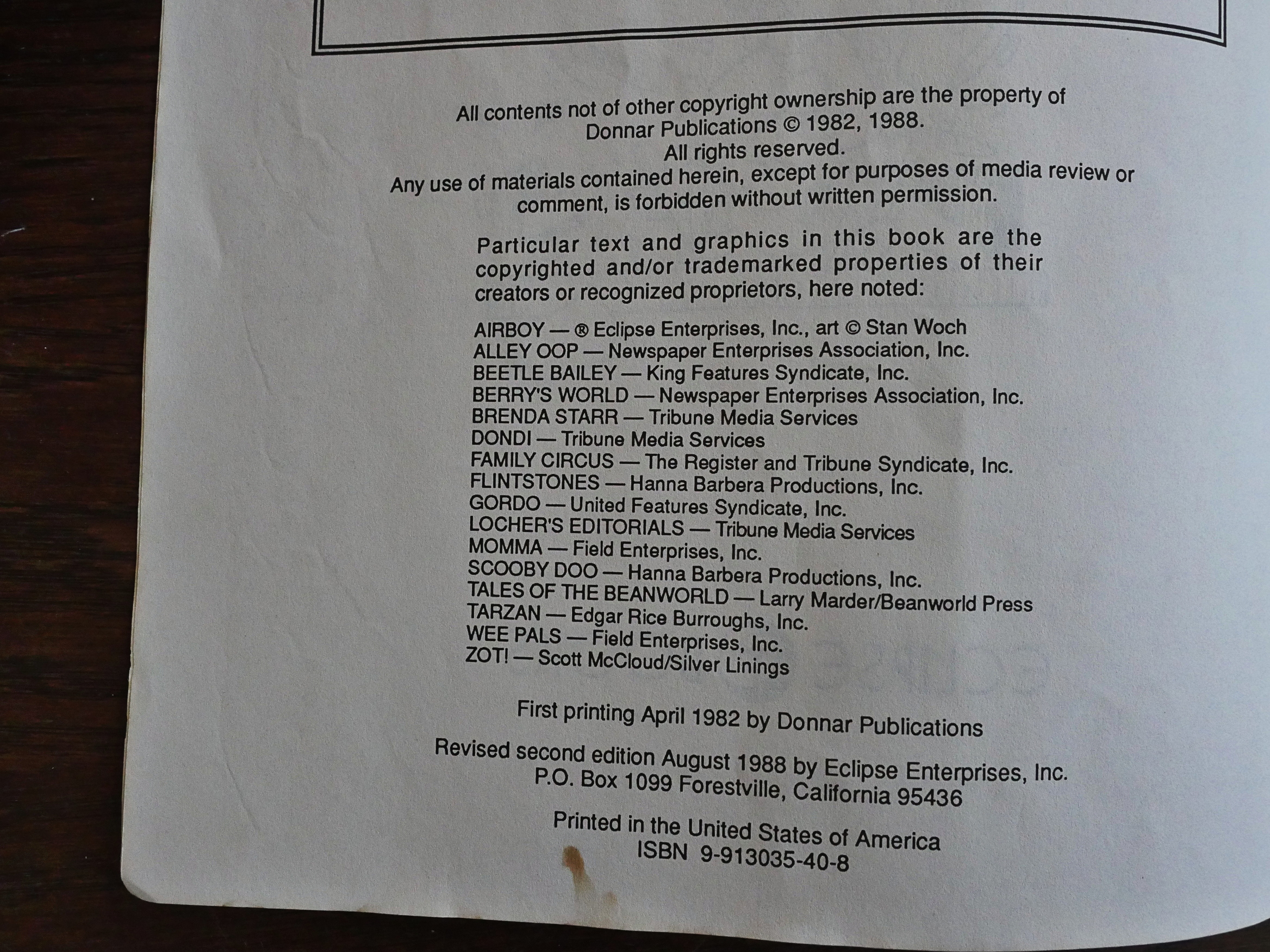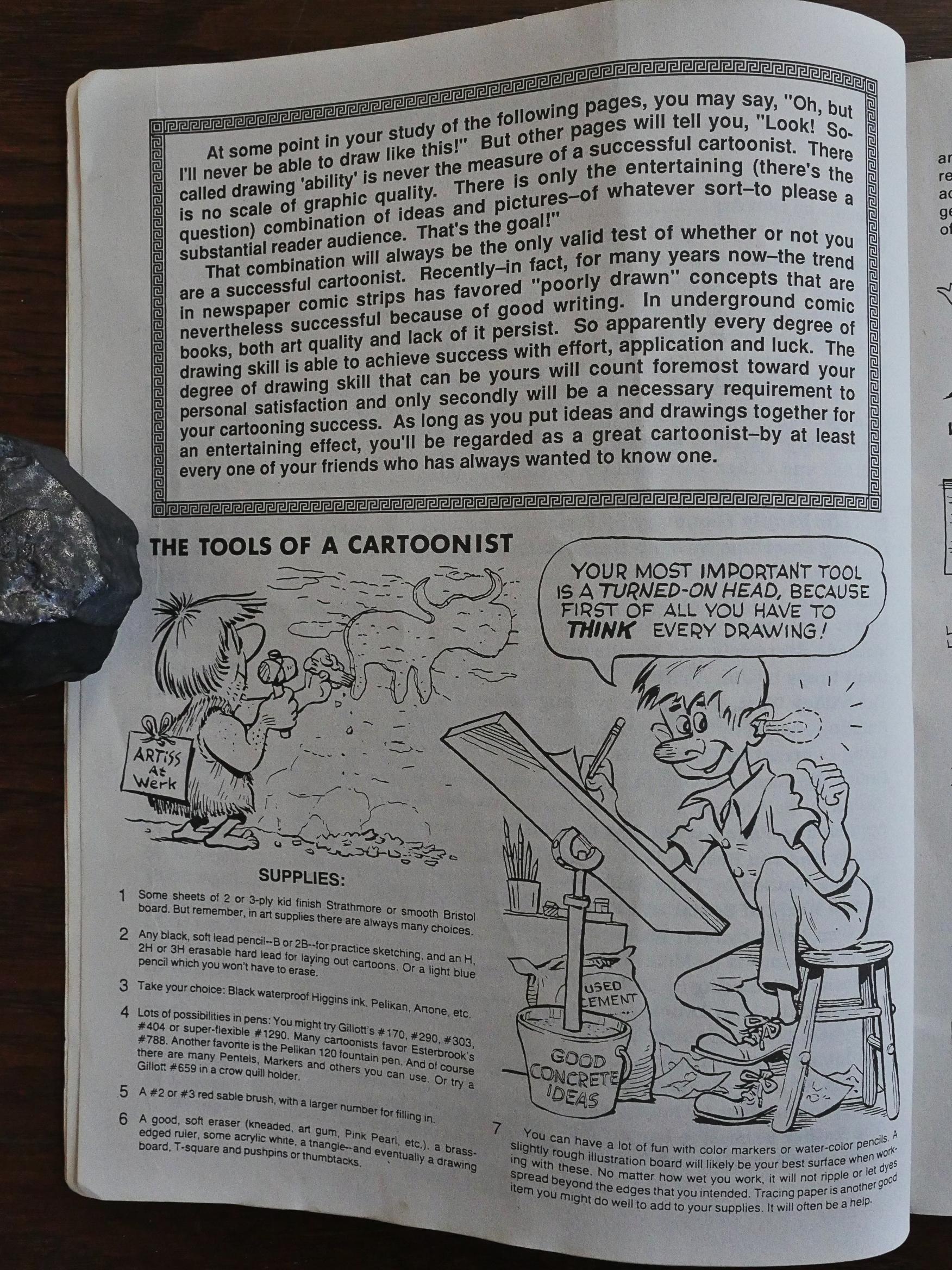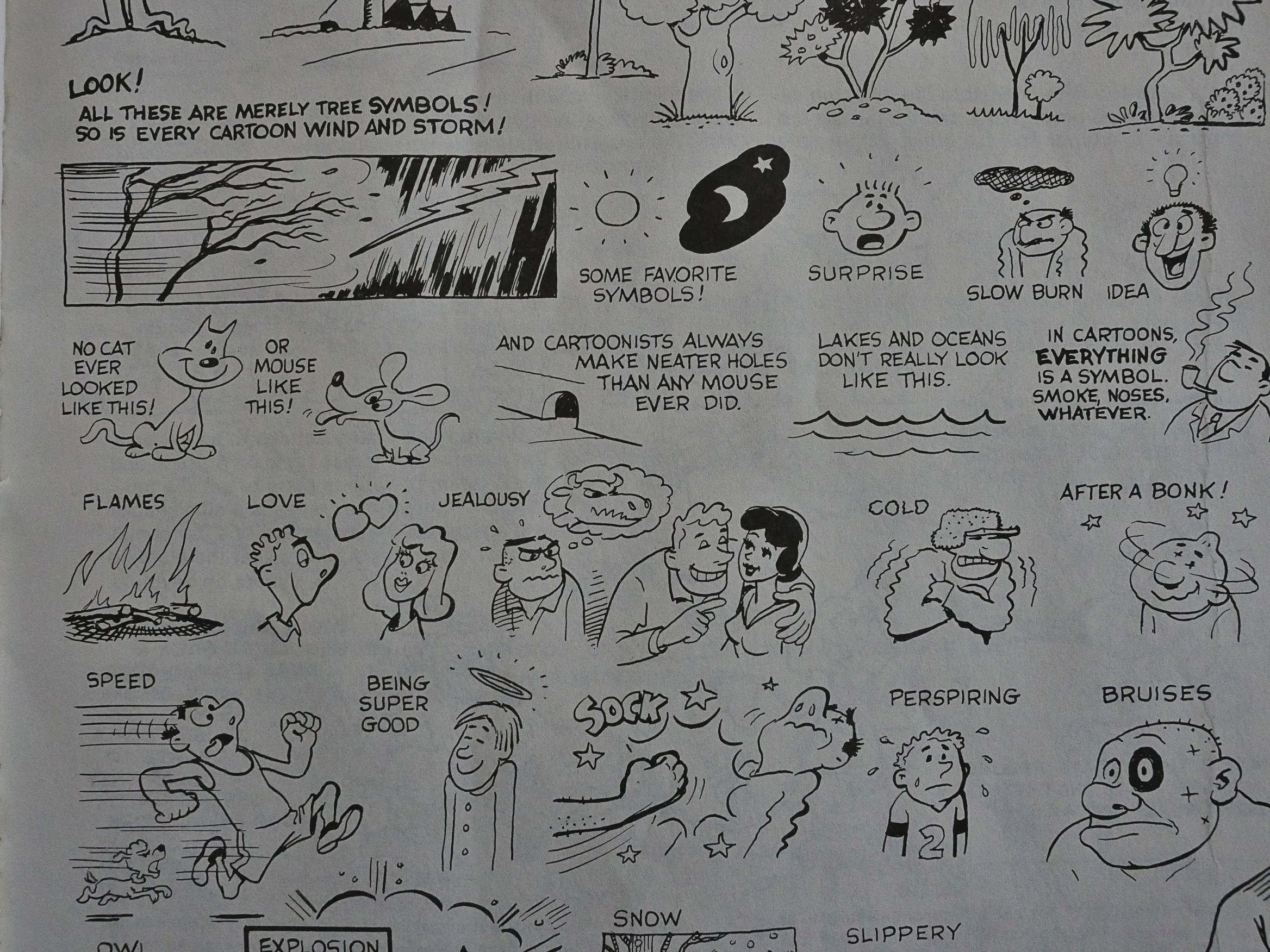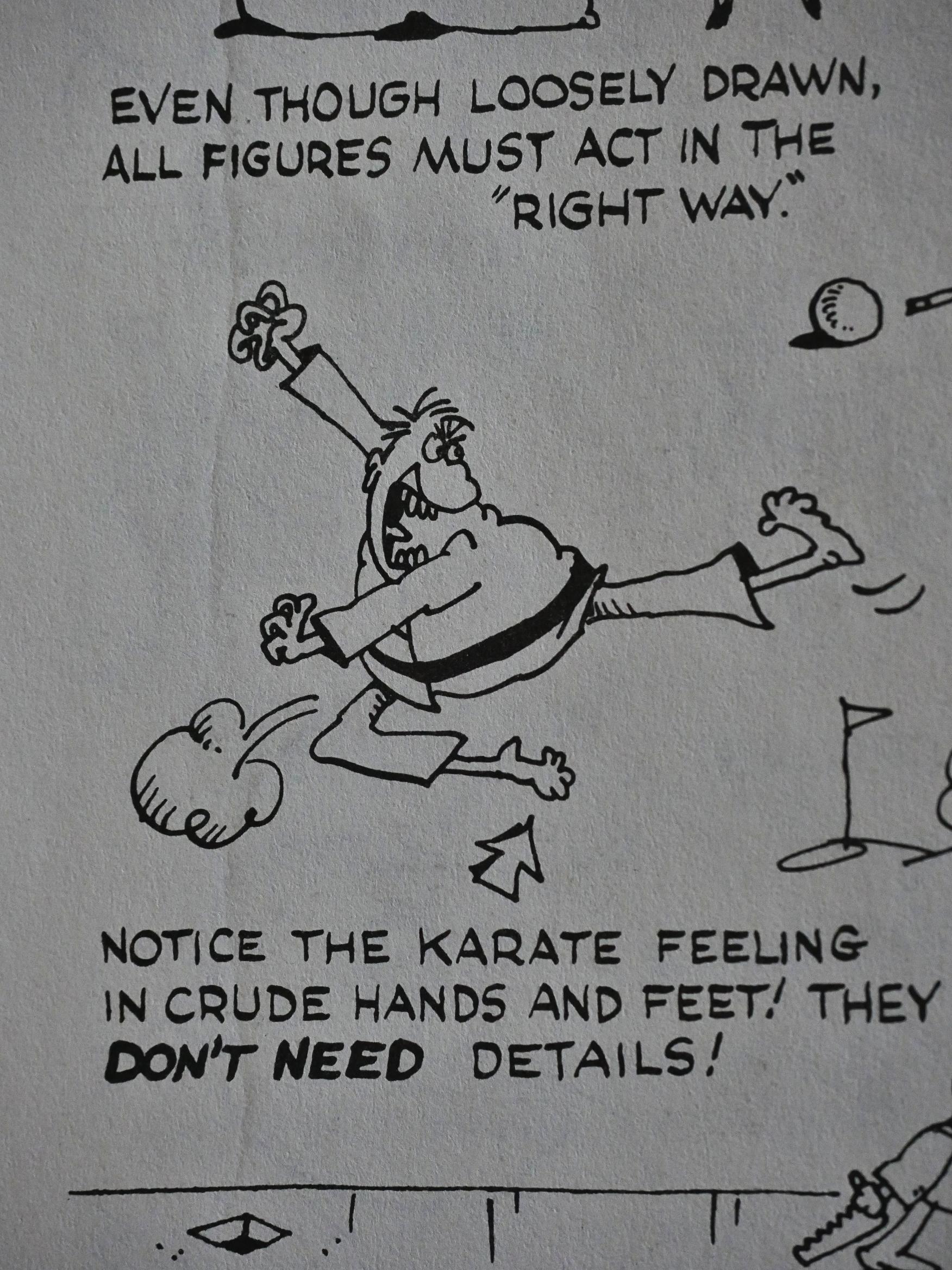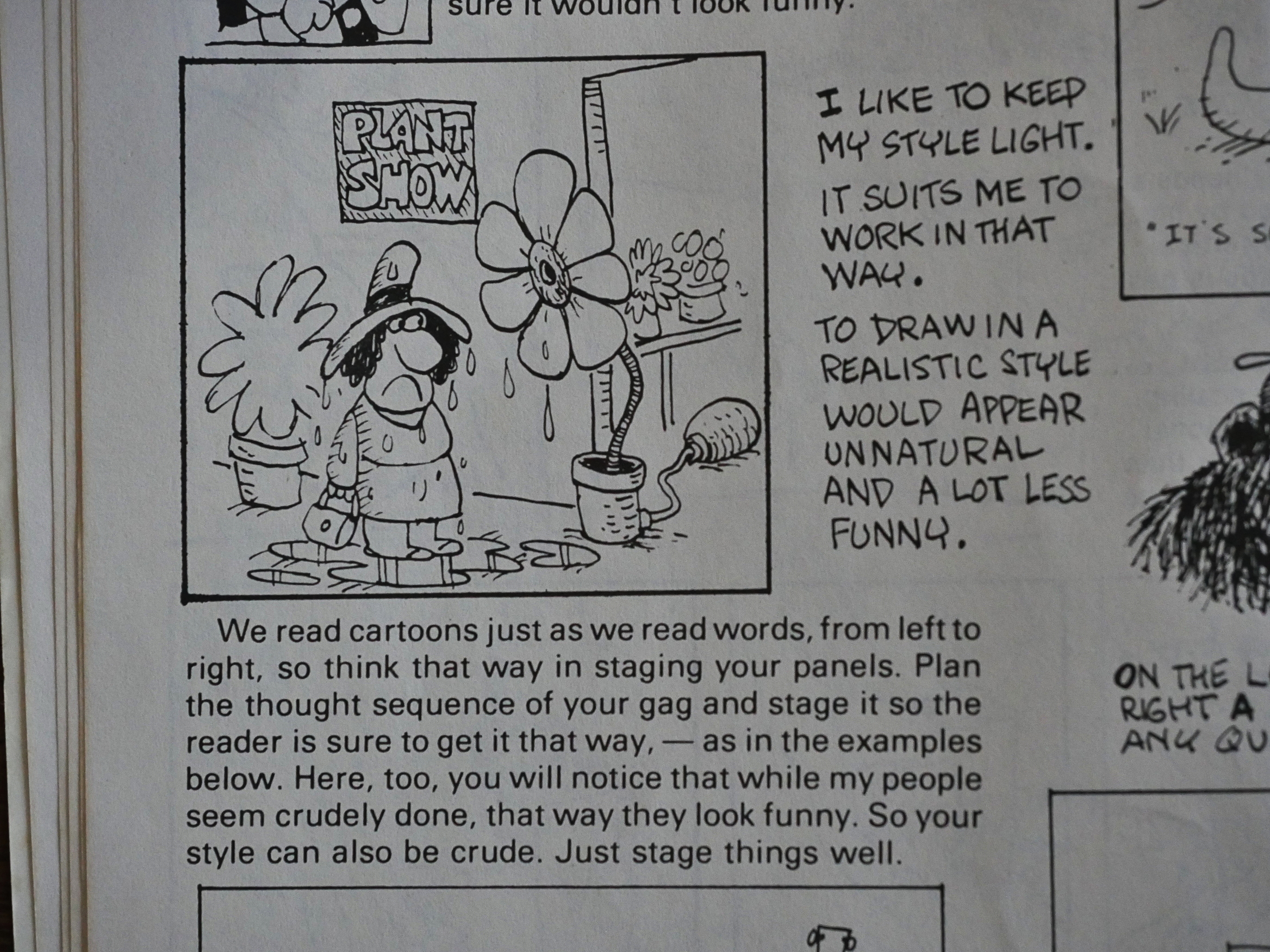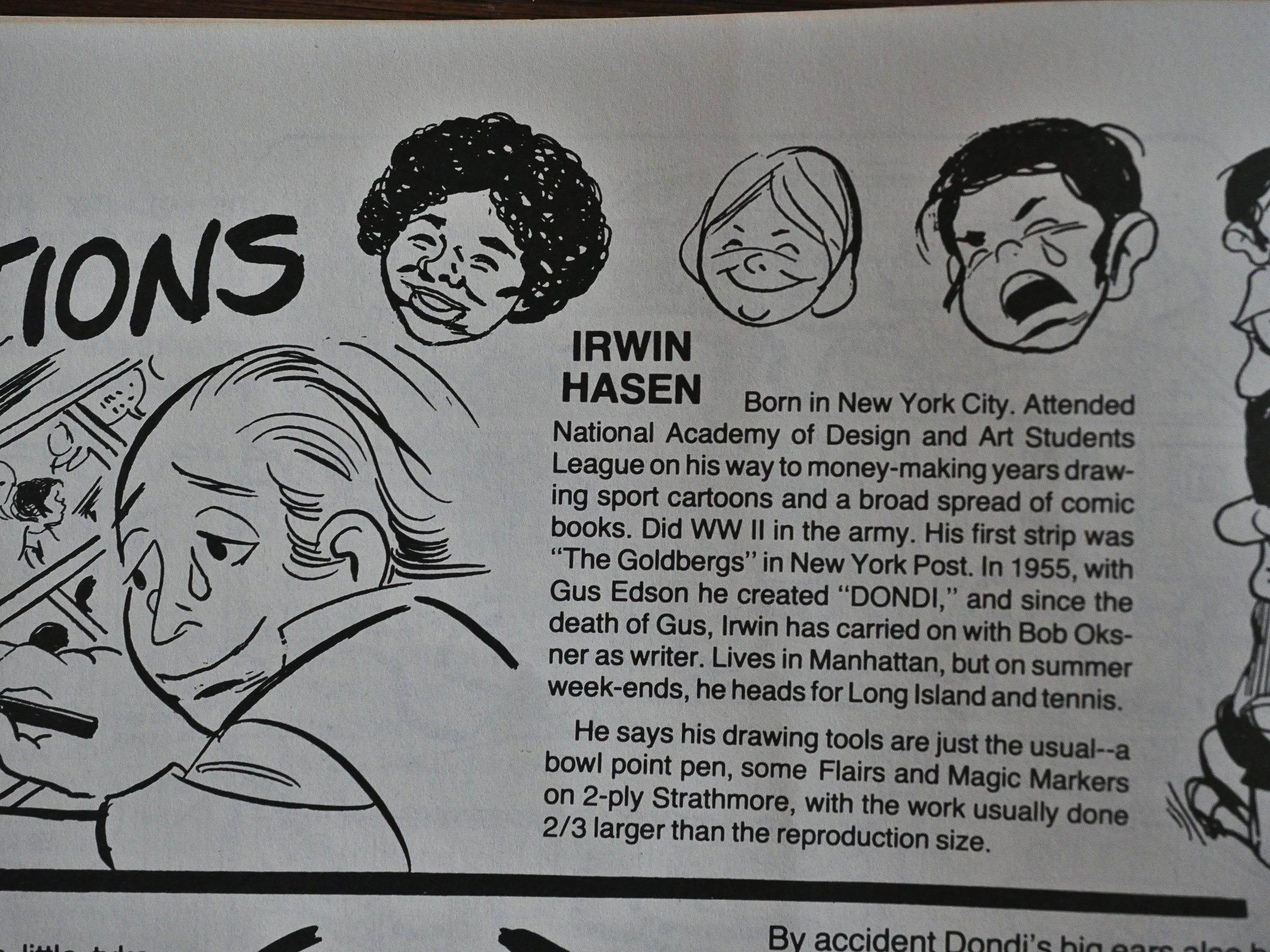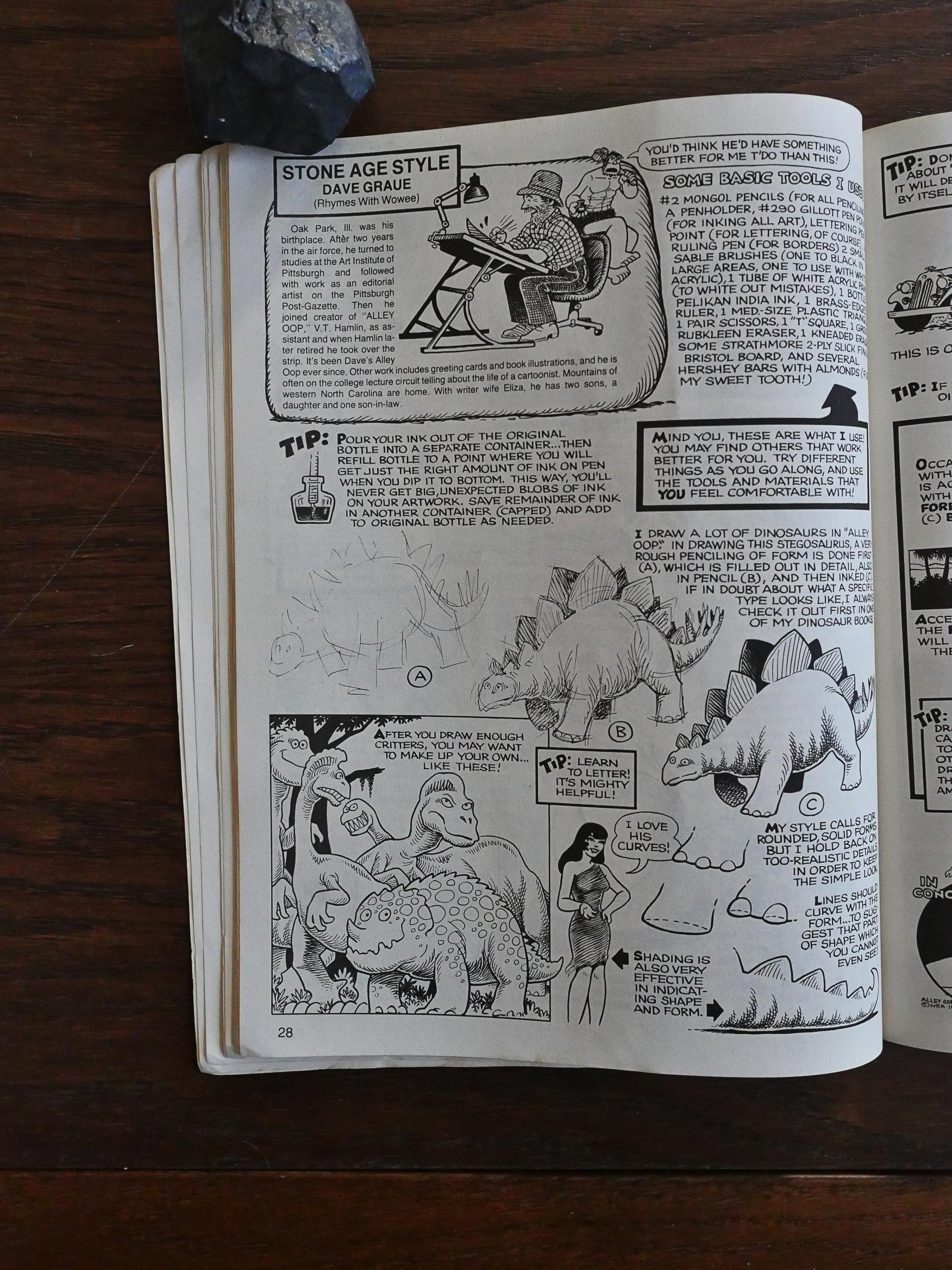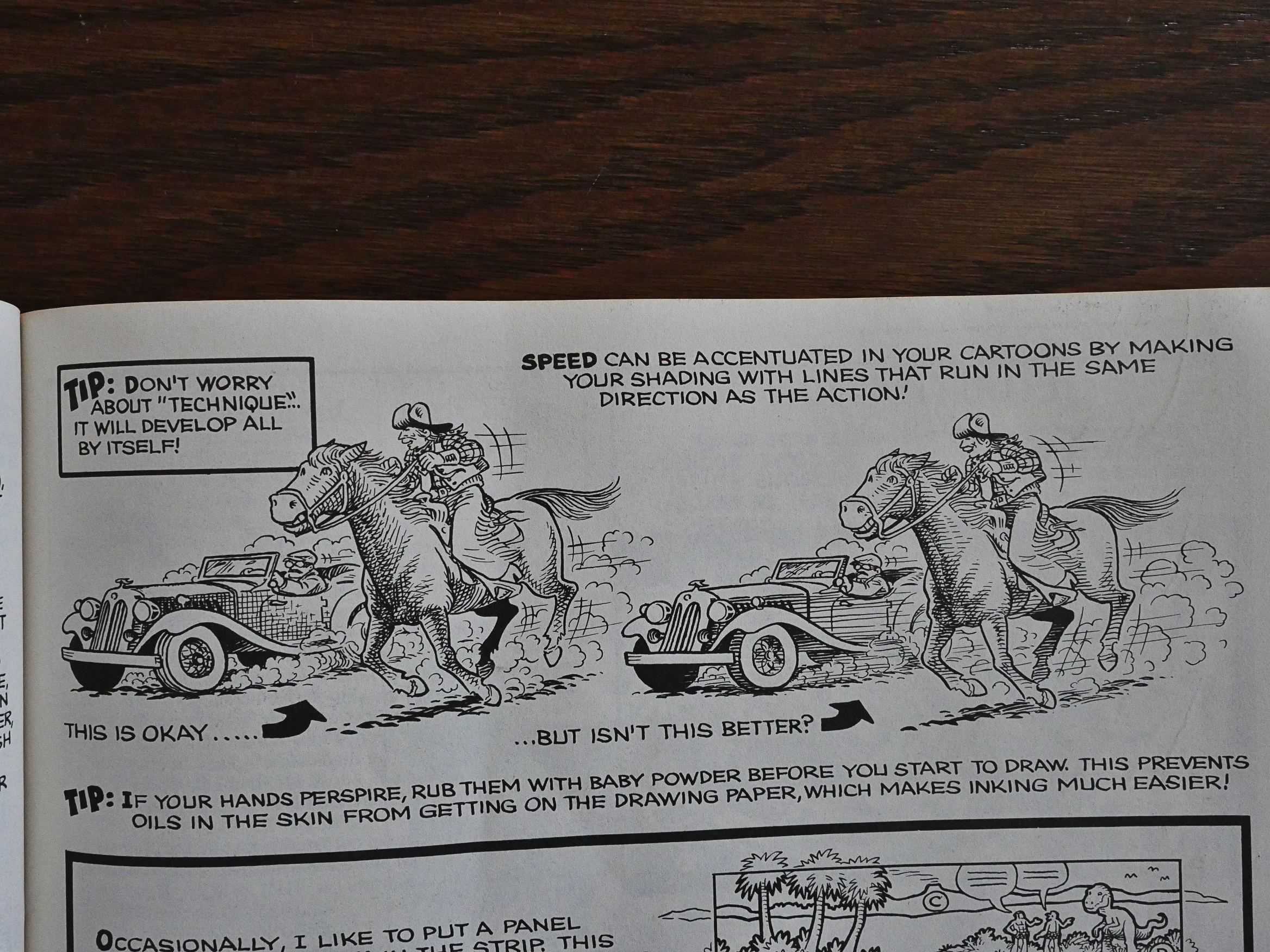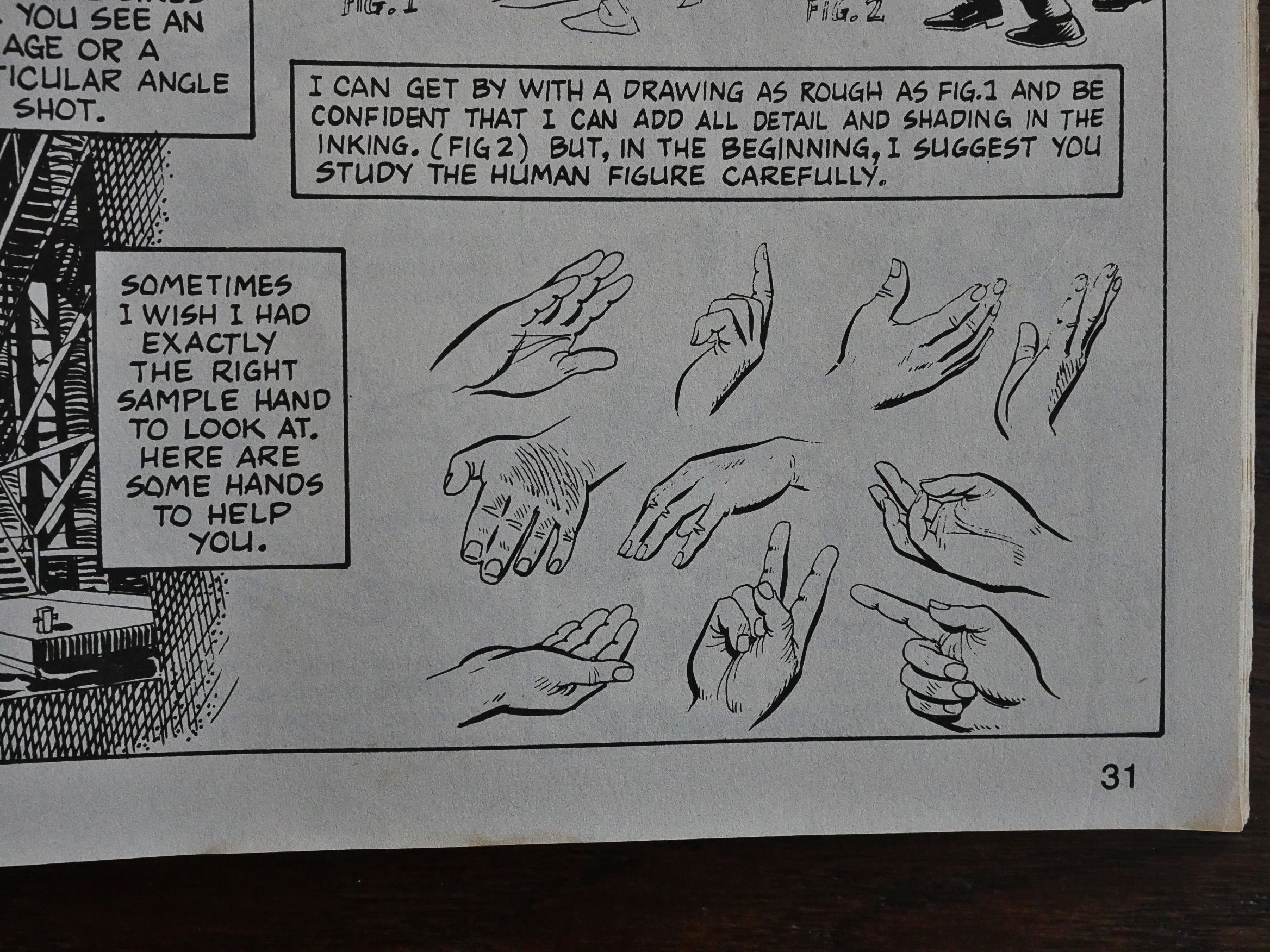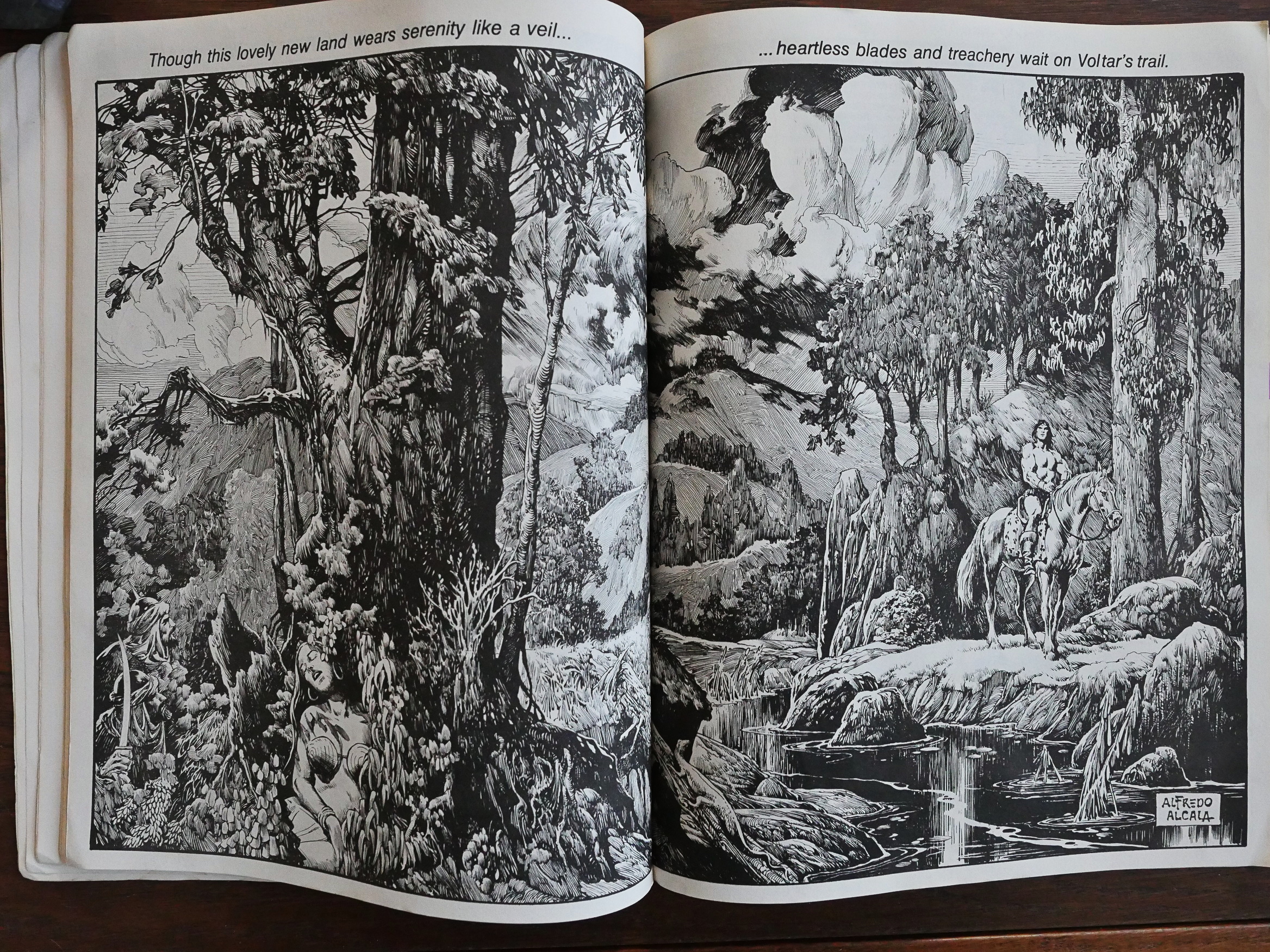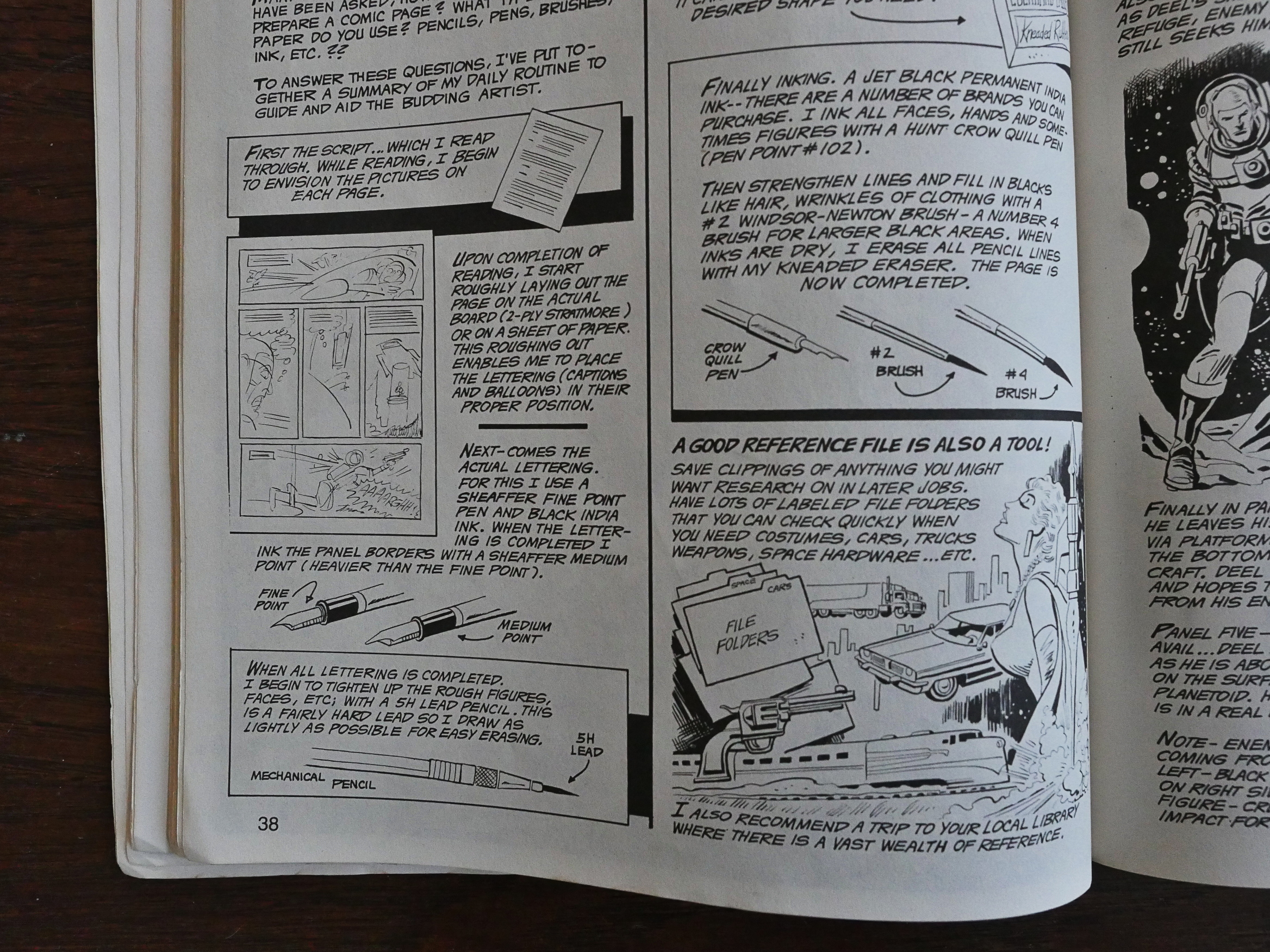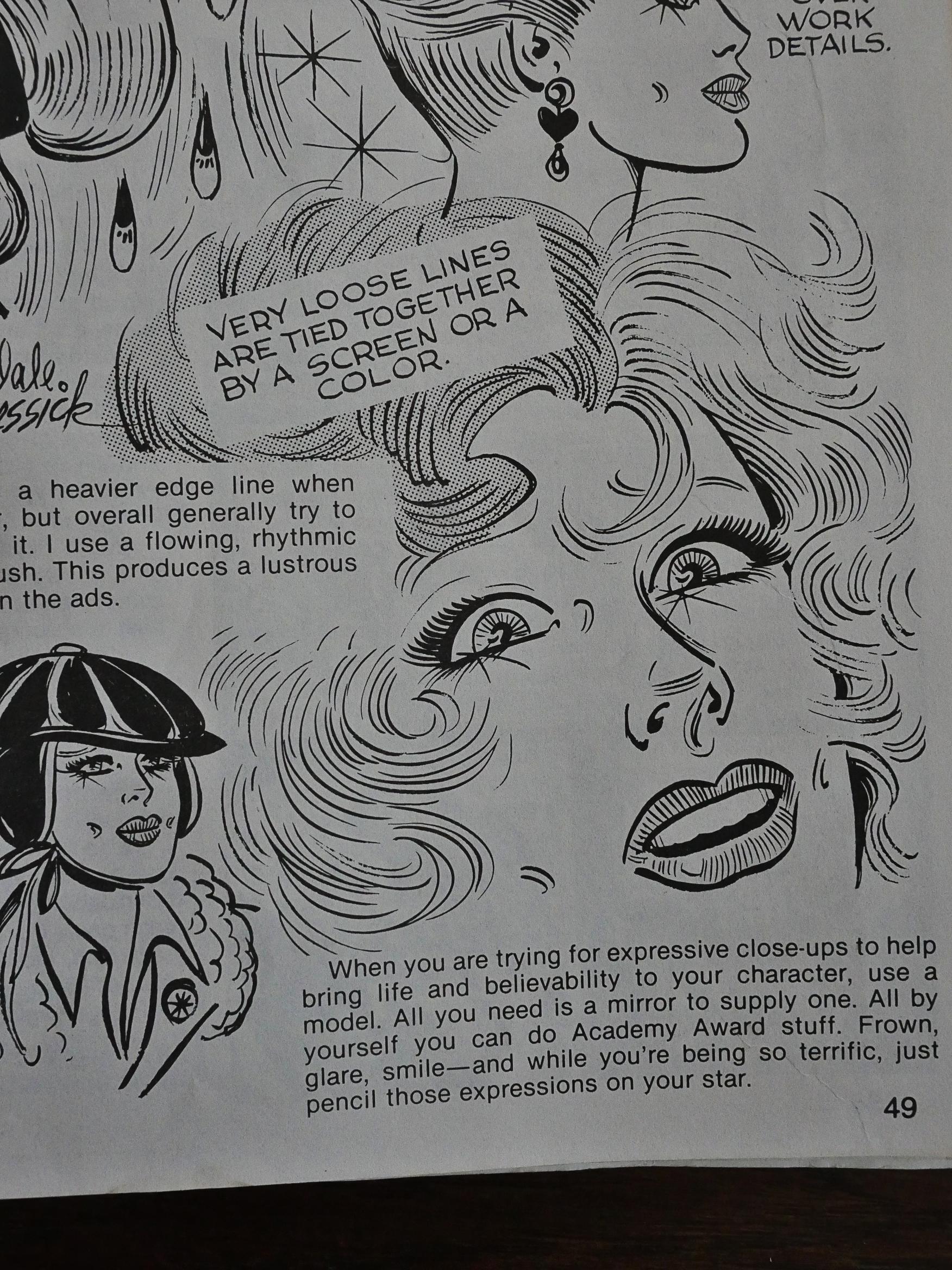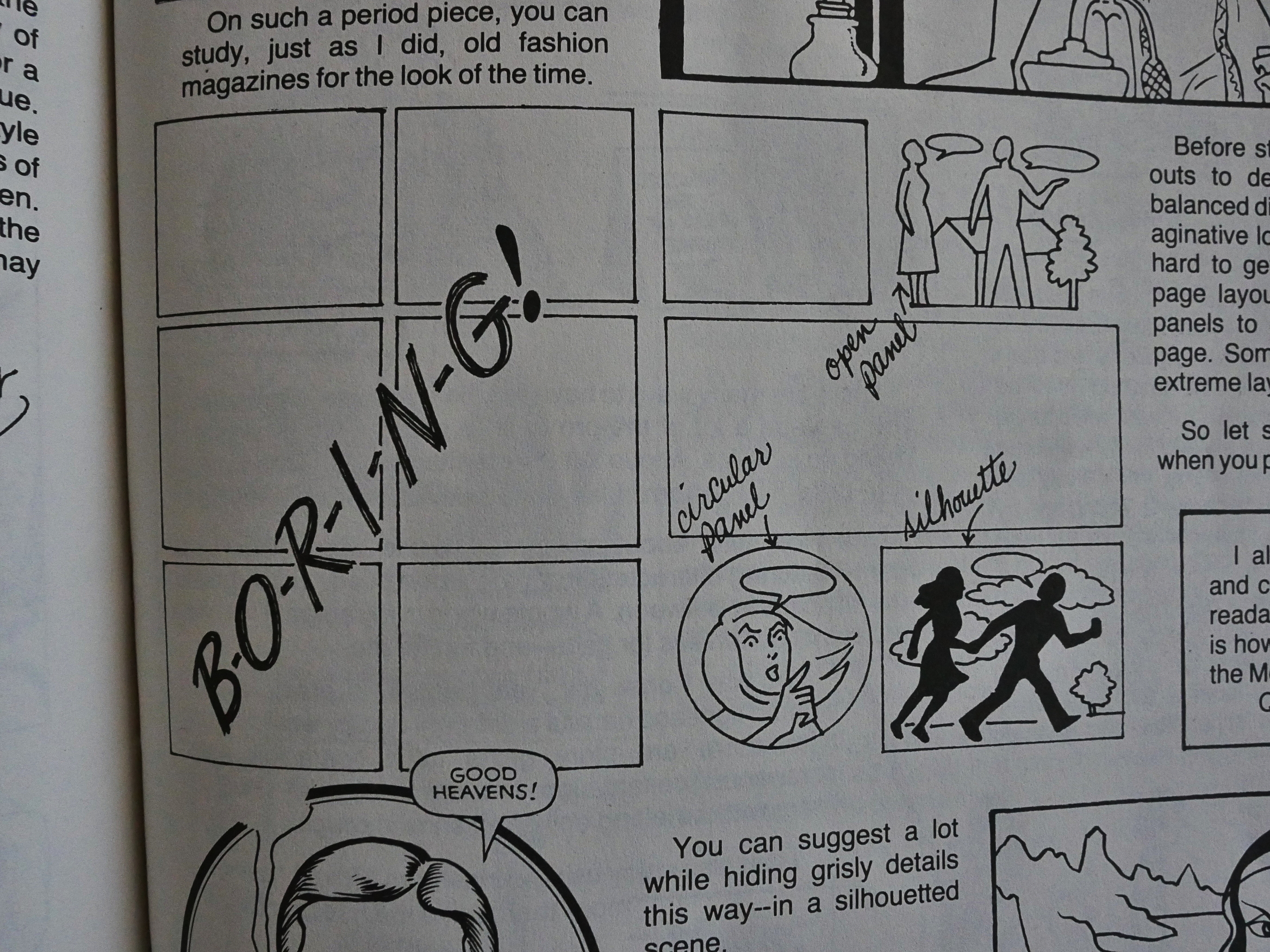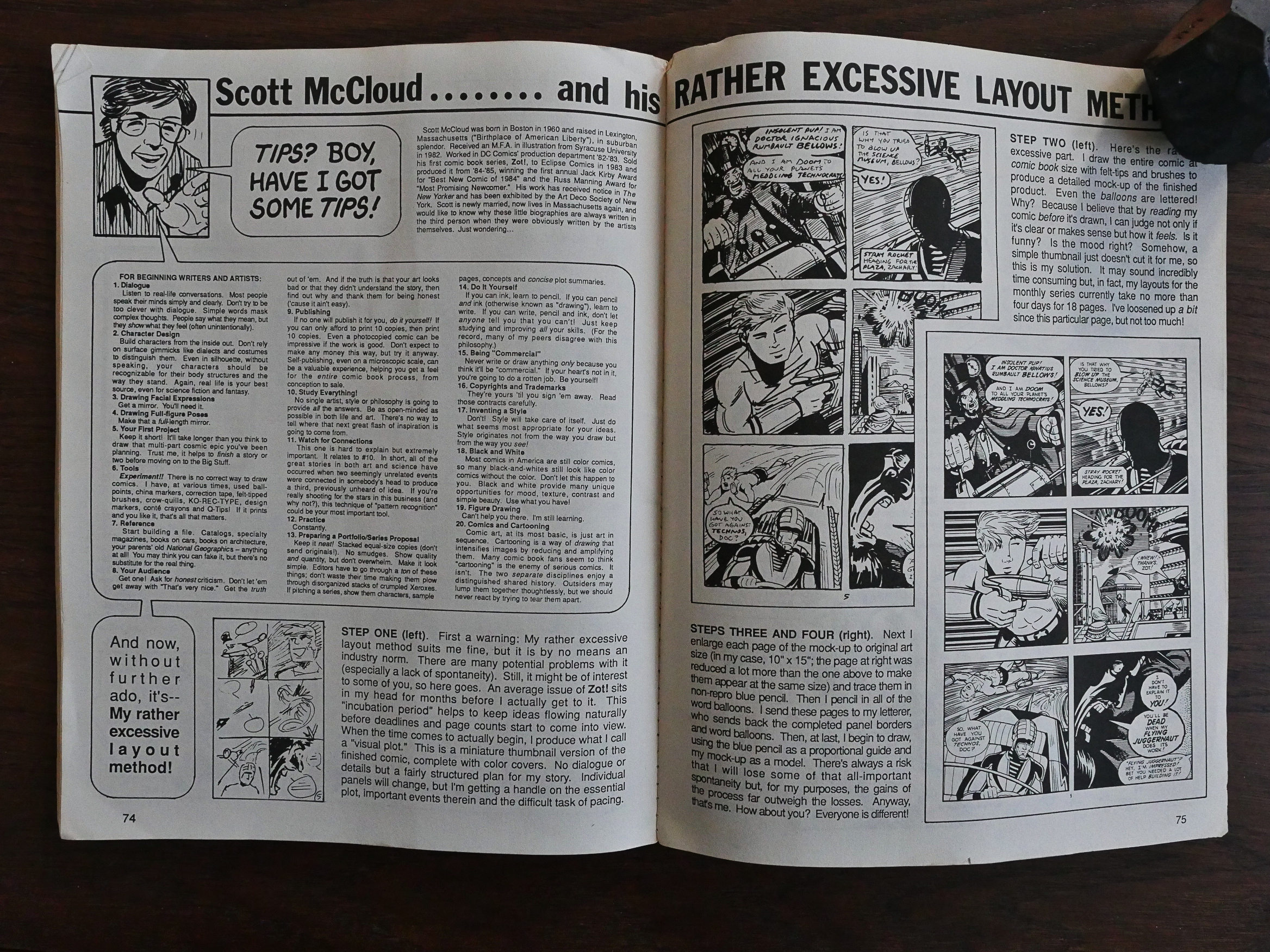Tips from Top Cartoonists (1988) edited by Don “Arr” Christensen.
Hey, we’re a bit out of sequence here… I’m playing catch up with a few books that didn’t arrive in time for me to blog about them when my CDO said that I should.
So here we have a book originally published (by Donnar Publications) in 1982, but this new, expanded version was published by Eclipse in 1988.
The format of this book is basically that every cartoonist gets two pages do talk, apparently, about anything they want as it relates to making comics. (A couple get four pages.) Some are more high-level than others, but I mostly appreciate (as a non-artist) the most basic stuff, like what paper to use (“two ply Strathmore”) and what pens and inks to use, because it’s just so nerdy and that appeals to me.
So here’s the editor, Don Arr, himself, giving some pointers on how to draw cartoony cartoons.
Sergio Aragones stresses how details and the lack of them makes things more or less funny.
Mell Lazarus owns up to drawing crude characters, but thinks that makes them funnier.
Each cartoonist gets a very short bio to explain who they are.
Most of these pages have been created entirely for this book, I think, with instructional how-to drawings of how to create various effects.
Like here when Dave Graue demonstrates the difference directionality in hatching makes. Nice.
Dan Spiegle very helpfully provides several hands that people can crab.
Alfredo Alcala, after doing his allotted two pages of tips suddenly springs this double page spread on us. Yowza.
Oh, is that what a crow quill pen looks like? I’ve never quite known…
Dale Messick is one of only three women who appear here, but I guess that’s a better percentage than most of these things at the time.
Trina Robbins lays down the law on b-o-r-i-n-g! layouts.
And Scott McCloud, of course, manages to squeeze in about twice as much text as anybody else. No wonder he went on to write a couple of books about comics.
This book has never been reprinted since, and I’m unable to find anybody on the web who has anything to say about it. I do wonder who’s the target audience for this book… It’s a bit on the basic side, which meant that I could understand most of what they’re talking about. Which is nice. But would anybody who’s actually interested in drawing find it helpful? I don’t know.

